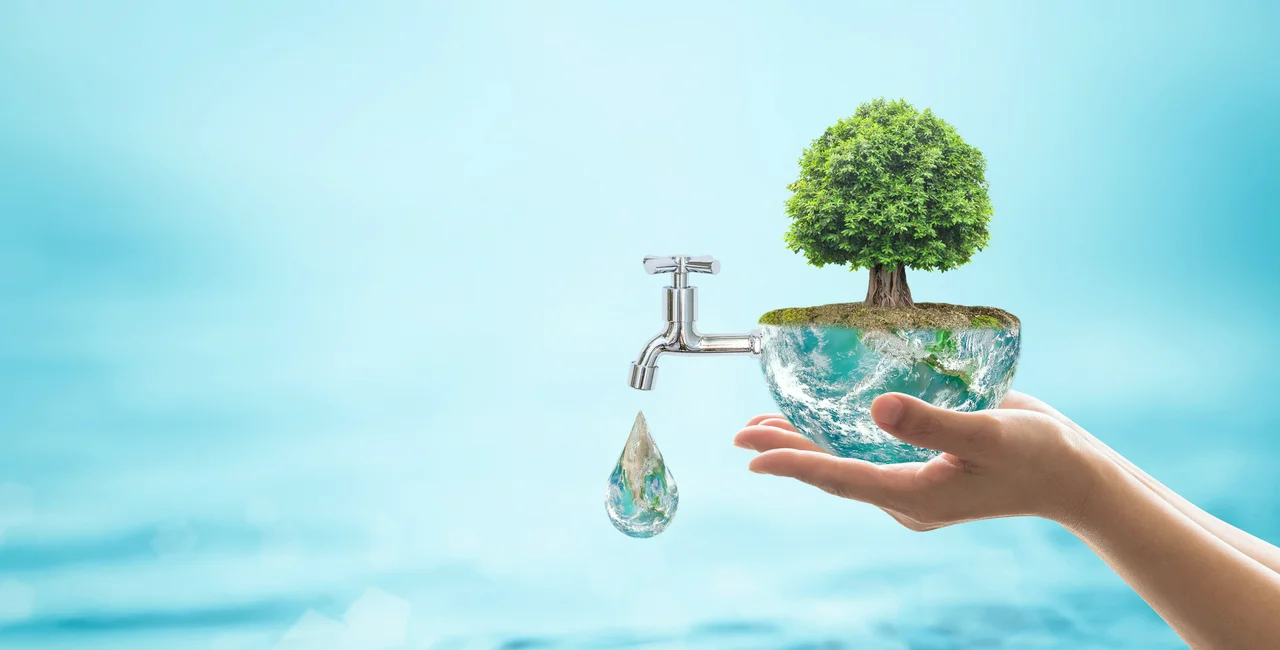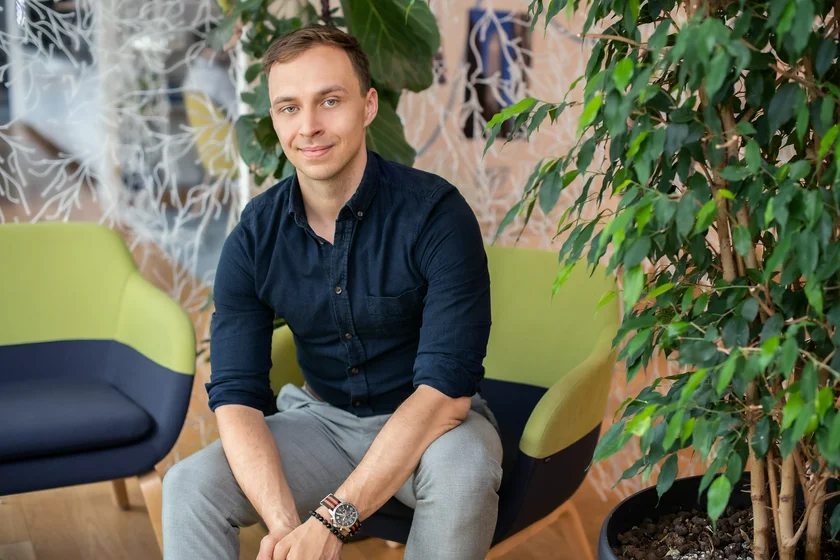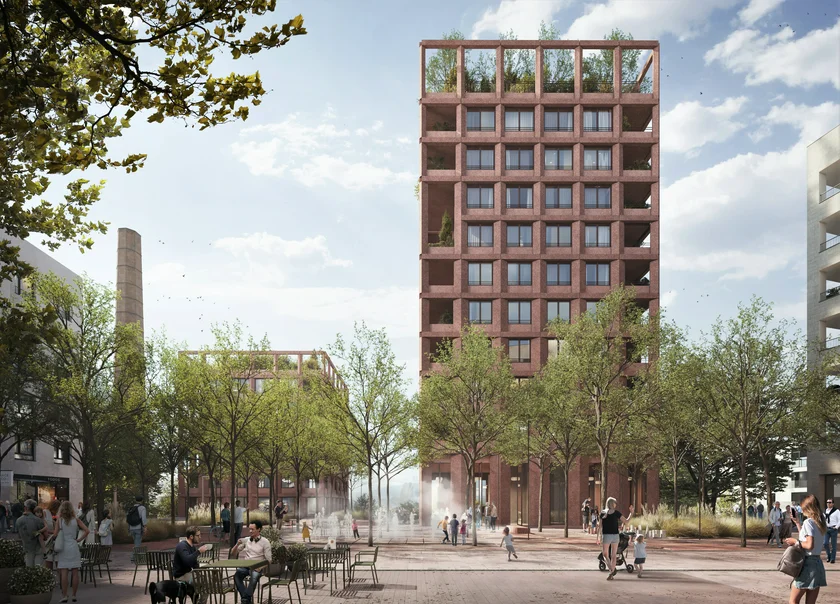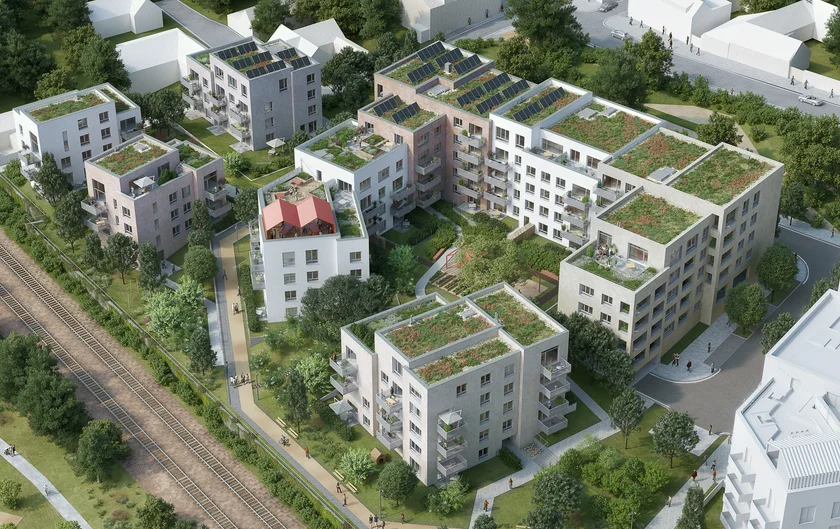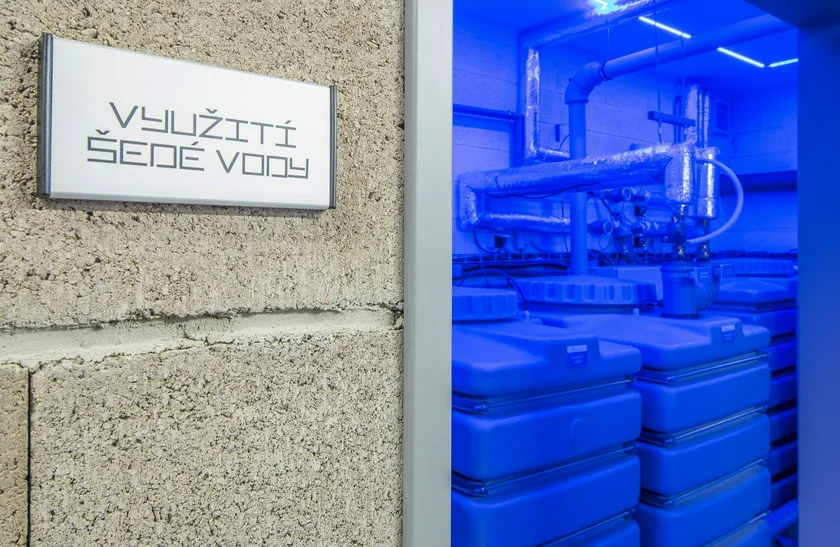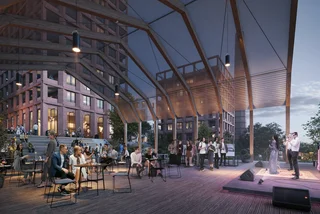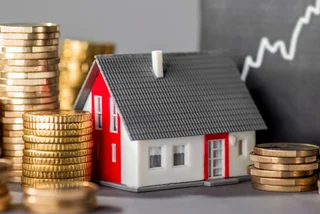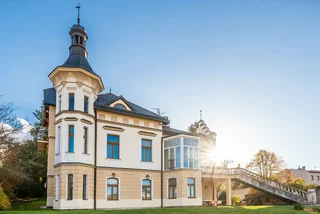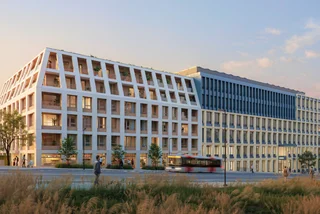Buying a new flat is perhaps the largest investment most people will make. There is not only the cost of the flat, usually paid off over many years, but also monthly costs of utilities – electricity, gas, and water. Many people now are also concerned not only about the rising utility costs but also with the environmental impact of using all the utilities.
Some new housing developments are designed to be efficient not only in terms of energy but also water. Skanska Reality has been pioneering many water-efficiency concepts in the Czech Republic. The company is currently creating a blue-green neighborhood, Modřanský cukrovar, in Prague’s Modřany district. "Blue-green" in this context refers to implementing a whole system of building adaptions to address the environment.
“The rate of interest in environmentally friendlier homes increases year by year. Our potential customers come to our Home Centre asking directly for water savings, energy efficiency, chargers for electric vehicles, and so on. This fuels our will to create more and more sustainable living,” said Miroslav Kobera, green business manager at Skanska Reality.
Kobera is helping Skanska Reality meet its goal of leaving a zero-carbon construction footprint by 2045. Before joining Skanska, he worked as a laboratory assistant in ecotoxicology at the University of Chemistry and Technology, Prague (VŠCHT), his alma mater.
Kobera explained the importance of increased efficiencies and sustainability. “It's crucial to treat human activities and actions as a complete life cycle. This means assessing the environmental impacts associated with all the stages of the life cycle of a product, process, or service. Only one of the impacts is climate change, but there are several others, such as toxicity, smog, and so on,” he said.
Depletion of natural resources such as water is a key environmental issue. “That’s why we at Skanska care about not only by choice of materials, from which we build our homes but also by the consumption of resources, such as water, energy, etc., during the usage – living stage. Monetary savings are beneficial to the customer in the first place, but there has been a great increase in the number of environmentally responsible customers who are looking for a greener, more sustainable home,” Kobera added.
Modřanský cukrovar will be the first multi-stage residential project in the Czech Republic that, due to the use of gray, rain, and utility water combined with other energy-saving technologies, will achieve up to 47 percent savings in drinking water. The project of almost 800 residential units plus public spaces will save up to 35,000 cubic meters of water per year.
For the first time in the Czech Republic, inhabitants of the district will be able to flush toilets with gray water. As a result, residents save up to 25 percent on drinking water consumption. Another innovation is that residents will have the opportunity to use gray water to wash clothes in automatic washing machines. This can reduce drinking water consumption by up to 6 percent.
“Using gray water for washing machines would also be an option. This would be an innovation on the Czech market. As far as I know, there is no other residential project in the Czech Republic introducing this system,” Kobera said.
Gray water is a new concept to some people, but it is not complex. “Imagine a house system where water used after a shower, bath, and from the sink goes to a container in the basement, where it is stored. Gray water may have soap and some minor amounts of biological material, but nothing serious. After a cycle of water treatment based on either chemical or biological purification, the water is then reused for flushing the toilets,” Kobera explained.
Strong chemical solutions and cleaners can’t be used, as these would negatively impact the treatment system. “There are no other negative obstacles as to why we shouldn’t also be using such a great environmental solution,” Kobera said.
Some environmental programs can be added to a building after it is built – solar panels on a roof, for instance. Gray water needs to be included in the initial planning of a building project.
“You need two sets of pipes in the house, one for potable (drinking) and the other for gray water. These two systems are to be kept separate, therefore it has to be planned during the design stage of project development. It would be very difficult to put the system afterward after the house is already built,” Kobera said.
The two sets of pipes ensure that gray water will not get mixed with drinking water, as the two systems are completely isolated from each other.
Skanska has used gray water in its houses before, and people have been quick to embrace the concept. Skanska’s first project using a gray-water system was Botanica K in Prague 5. The K building, a part of the larger Botanica Residential Quarter, was used to gain experience with concepts such as gray water that could be used in future projects. Botanica K was the first residential project in the Czech Republic to receive BREEAM certification at the Excellent level. BREEAM assesses and certifies the sustainability of buildings.
“It has been already been in use eight years, and more and more customers come and ask for the same environmental solution for their apartment house,” he said.
While the use in the Botanica development was limited in scope, in Modřanský cukrovar it will be used throughout the new neighborhood.
These are just some of the steps Skanska has taken. “For many years, we have been looking for solutions on how to minimize the volume of potable water used in our homes by installing water-saving fixtures, low-flush toilets, and, afterward, a gray water system as the first to be installed in a residential project in our country,” Kobera said.
Modřanský cukrovar has other innovations regarding water as well. “Savings on potable water are important, but environmentally we have to also look at rainwater management. The so-called low impact development (LID) management system implements measures that result in the infiltration, evaporation, or use of stormwater in order to protect water quality. The main principle of LID is to minimize site runoff and control small storms,” he said.
Rainwater, for example, is used to irrigate green spaces, rather than being allowed to go directly into the sewer system. Permeable surfaces, sidewalk drainage, and suitable landscaping allow rainwater to be absorbed or evaporated, contributing to better local air quality. Excess water from green roofs is drained into 19 storage tanks with a volume of 190,000 liters, and from there is used for watering green areas in the courtyards.
The legal framework is finally catching up with environmental innovations. “The local introduction of legislation goes hand in hand with the advancement of more sustainable technologies. In many cases, the absence of legislation creates obstacles to introducing new technical improvements. Last year’s great accomplishment – implementation of a gray water standard for residential buildings in the Czech Republic – finally acknowledges and sets clear conditions and requirements for its installation,” Kobera said.












 Reading time: 5 minutes
Reading time: 5 minutes 